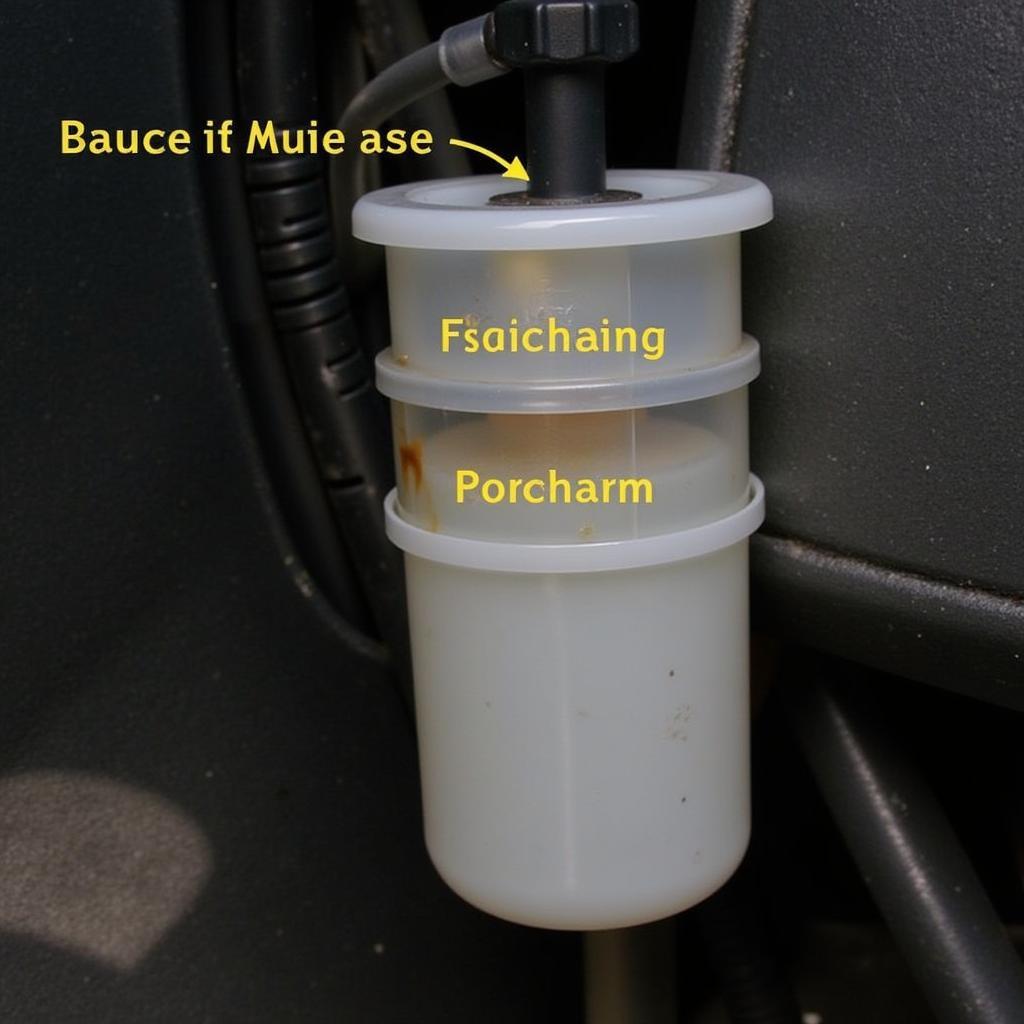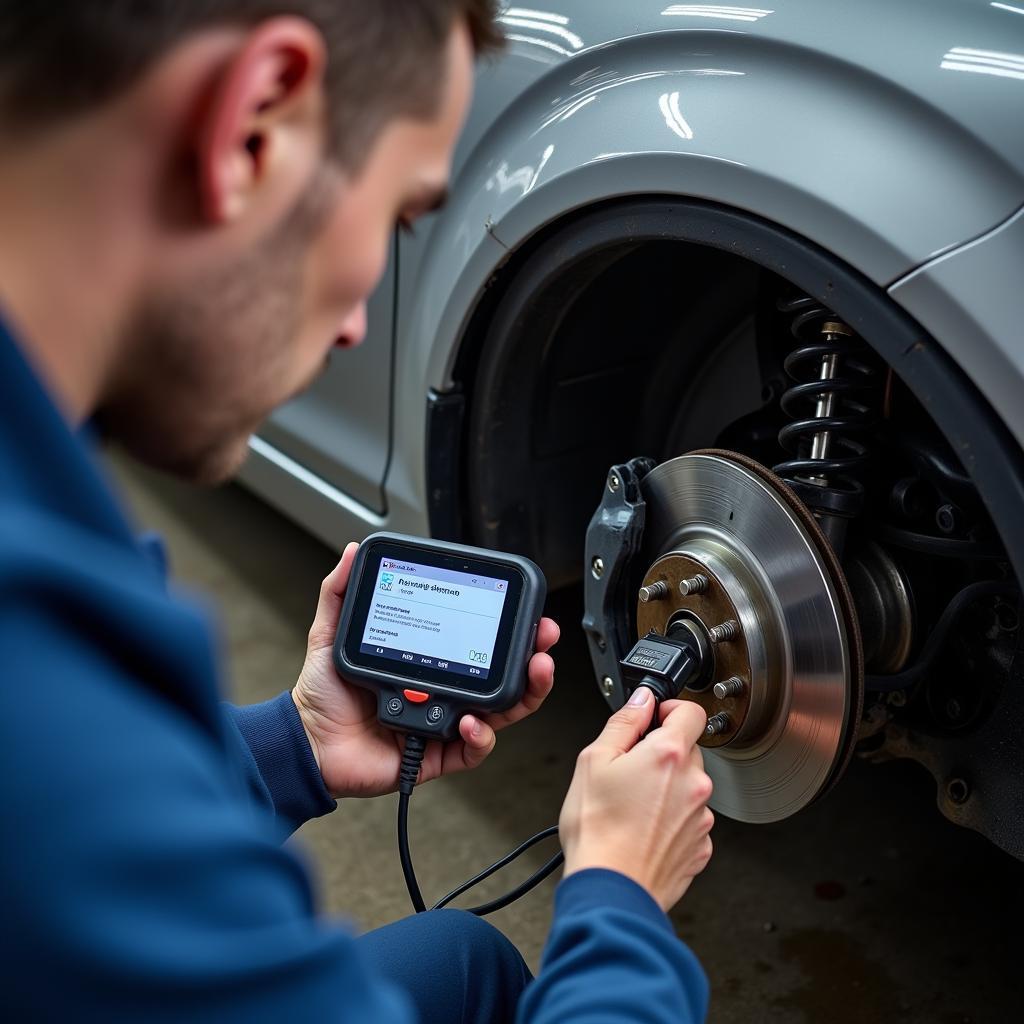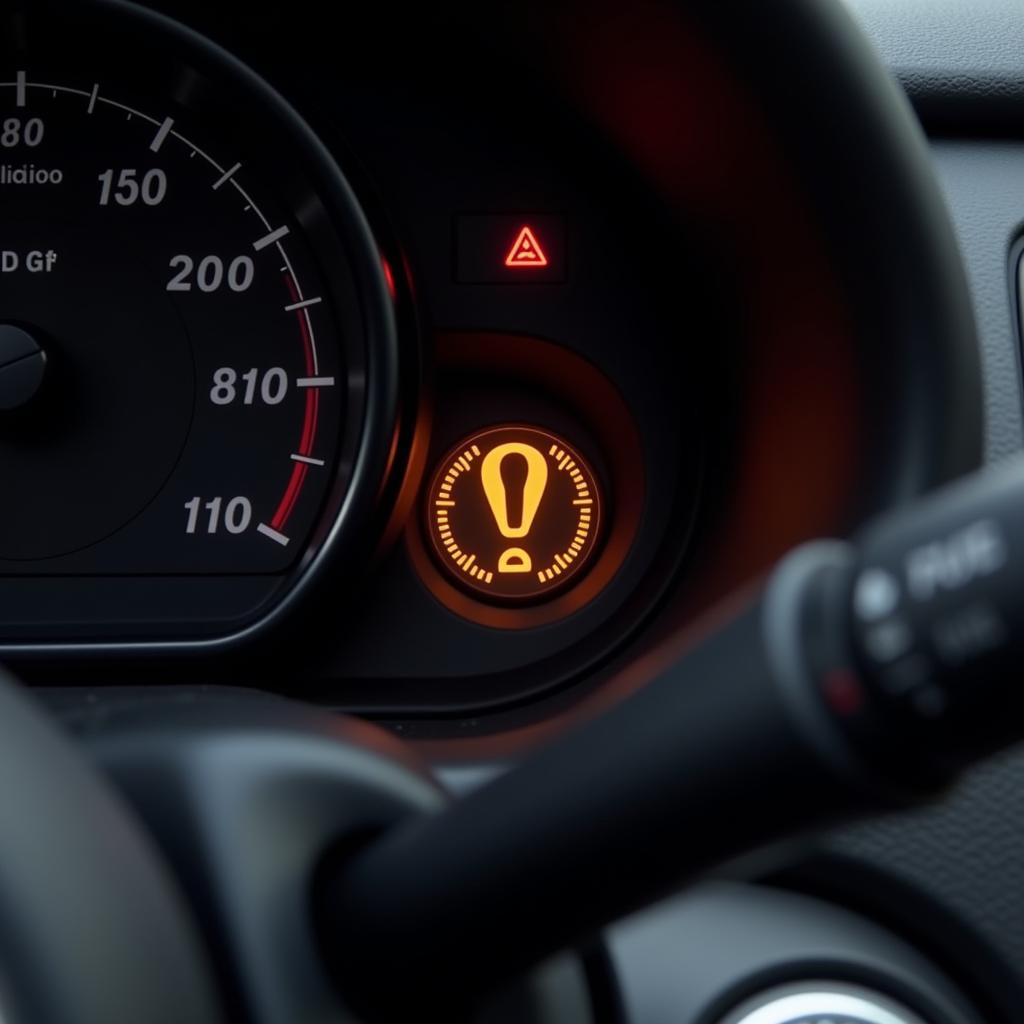The brake system warning light on your dashboard is a crucial safety feature, illuminating when the car’s onboard computer detects an issue with your braking system. Ignoring it could lead to serious consequences, even complete brake failure. This comprehensive guide explores the common causes of this warning light and provides practical steps to help you diagnose and potentially fix the issue.
Understanding Your Brake System Warning Light
The brake system warning light, often symbolized by an exclamation mark within a circle or parentheses, can illuminate for several reasons. It’s essential to understand that this light doesn’t pinpoint a specific problem but alerts you to a potential malfunction within your braking system.
Common Causes of a Brake System Warning Light
Before attempting any fixes, it’s crucial to identify the root cause. Here are the most common culprits:
- Low Brake Fluid: Your brake system operates on hydraulic pressure provided by brake fluid. If the fluid level drops too low, often due to a leak or worn brake pads, the warning light will trigger.
- Worn Brake Pads: Brake pads have wear indicators that make a high-pitched squealing sound when they wear thin. If ignored, the metal backing plate can contact the rotor, significantly reducing braking power and triggering the warning light.
- Faulty Brake Light Switch: Your brake lights and brake system warning light often share a switch. A malfunctioning switch can prevent your brake lights from engaging and trigger the warning light on your dashboard.
- ABS Issue: Modern vehicles are equipped with Anti-lock Braking Systems (ABS) for improved control during hard braking. A problem with the ABS module, wheel speed sensors, or related wiring can trigger the warning light.
- Parking Brake Engaged: In many vehicles, the brake system warning light also serves as a parking brake indicator. If you forget to disengage your parking brake, the light will stay on.
 Car Brake Fluid Reservoir with Low Fluid Level
Car Brake Fluid Reservoir with Low Fluid Level
Troubleshooting the Brake System Warning Light
- Check Your Parking Brake: Begin with the simplest possibility. Ensure your parking brake is fully disengaged. If the light remains on, move to the next step.
- Inspect Brake Fluid Level: Locate your brake fluid reservoir (refer to your owner’s manual) and check the fluid level. If it’s below the minimum mark, add the appropriate brake fluid (DOT 3 or DOT 4, as specified in your manual).
- Inspect Brake Pads: Visually inspect your brake pads through the wheel spokes. Look for significant wear or if the pad material is close to the metal backing plate. If you suspect worn pads, it’s best to have them inspected by a professional.
- Check Brake Light Functionality: Enlist a helper to confirm if your brake lights illuminate when you press the brake pedal. If not, the brake light switch might be faulty and require replacement.
- Seek Professional Diagnostics: If the issue persists after these checks, it’s crucial to have your vehicle diagnosed by a qualified mechanic. They have the tools and expertise to pinpoint the problem accurately.
 Mechanic Using Diagnostic Tool on Car's Brake System
Mechanic Using Diagnostic Tool on Car's Brake System
Remote Software Solutions for Brake System Issues
In our increasingly digital age, some brake system issues can be diagnosed and even repaired remotely. Advanced software solutions allow skilled technicians to access your car’s computer system wirelessly, retrieving diagnostic trouble codes and analyzing system data.
“Remote diagnostics are becoming increasingly vital in our industry,” says John Miller, a senior automotive diagnostician at Car DiagTech. “We can often identify the root cause of a brake system warning light without the car ever coming into the shop, saving time and potentially reducing repair costs for our customers.”
While not all issues are resolvable remotely, software-based solutions are proving incredibly valuable for:
- Identifying faulty sensors: Remote diagnostics can pinpoint malfunctioning ABS wheel speed sensors or other components, allowing for targeted repairs.
- Software updates and recalibrations: Sometimes, a software glitch or outdated module programming can trigger the brake system warning light. Remotely updating or recalibrating the system can rectify these issues.
 Laptop Displaying Remote Car Diagnostics Interface
Laptop Displaying Remote Car Diagnostics Interface
When to Consult a Professional
While this guide offers a starting point for troubleshooting, it’s crucial to consult a professional mechanic for:
- Suspected brake fluid leaks: Brake fluid is corrosive and requires specialized handling. A professional can identify the source of a leak and repair it safely.
- Worn or damaged brake components: Replacing brake pads, rotors, calipers, or other components requires mechanical expertise and specialized tools to ensure proper installation and functionality.
- Complex electrical or electronic issues: If the problem lies within the ABS module, wiring harnesses, or other intricate electrical systems, seeking professional help is essential.
Conclusion
Addressing a brake system warning light promptly is paramount for your safety on the road. While some issues might be resolved with simple checks or remote software solutions, others demand the expertise of a qualified mechanic.
Remember, a properly functioning brake system is non-negotiable. By understanding the potential causes and adopting a proactive approach to diagnosis, you can ensure your brakes are in optimal condition, giving you peace of mind on every drive.


